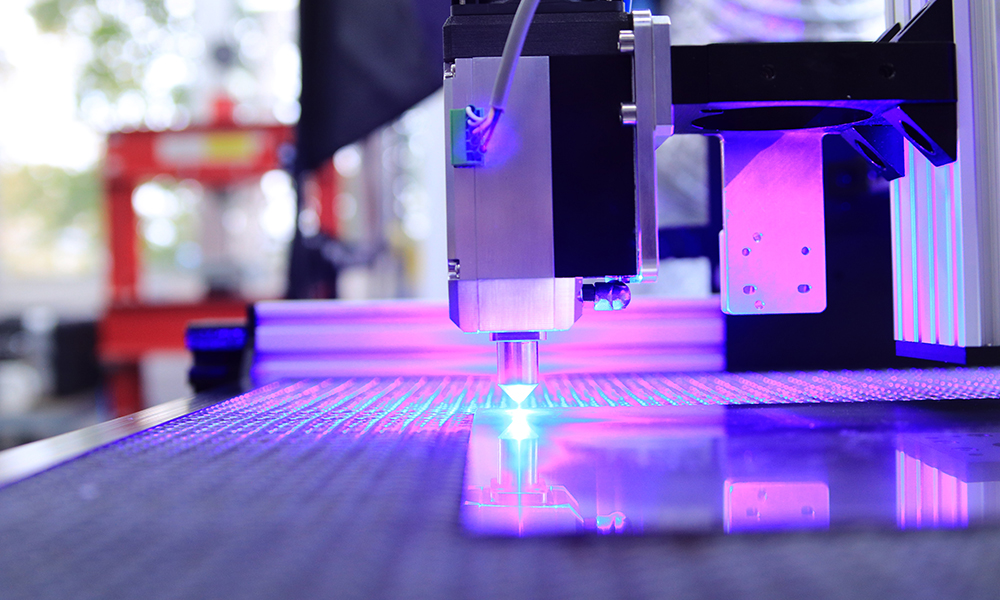
How to Use CNC Machining to Upgrade Your Manufacturing Process
Succeeding in the manufacturing industry today often means capitalizing on technology. As the sector grows increasingly competitive and technological innovations reshape historically inefficient processes, manufacturers must understand how technology can drive them forward. Computer Numerical Control (CNC) machining is one such technology.
While CNC machining dates back to the 1950s, it still holds vast potential for modern manufacturers. This technology is far more advanced than it was in the mid-20th century, and recent advancements have pushed its possibilities further. For those who haven’t yet, implementing CNC machining can bring considerable benefits.
What Is CNC Machining?
CNC machining uses computerized controls to cut and shape a piece of metal, wood, plastic, or other material. Instead of guiding the cutting or drilling edges manually, workers give the machine a pre-made digital design. The machine then follows this template to create an exact real-world replica of the original design.
Computer-Aided Design (CAD) blueprints give these processes remarkable accuracy and repeatability. Modern CNC machines have tolerances within the width of two human hairs and can repeat that accuracy indefinitely.
CNC machines come in various forms, serving multiple functions, including milling, drilling, and turning. They also come in varying sizes, prices, and numbers of axes.
How to Improve Manufacturing Processes
CNC machining can vastly improve material manufacturing workflows, but only with proper implementation. Here’s how manufacturers can use it to upgrade their processes.
Replace Manual Machining Operations
Since CNC machines can be expensive, effective implementation relies on applying them to areas where they’ll make the most difference. Often, this means replacing manual operations. CNC machines make fewer errors than humans and can create more pieces in less time, improving efficiency while reducing waste.
If facilities have multiple machining operations to implement CNC, they should aim for the most heavily manual first. Replacing as many manual processes as possible will result in the greatest time and cost savings, leading to quicker ROIs. More advanced, five-axis machines may even be able to create more complex designs than manual alternatives, creating new revenue streams.
Optimize Machine Maintenance
As with any piece of equipment, CNC machines will incur some maintenance costs over time. Manufacturers can make the most of these processes by minimizing these expenses and extending machine lifespans. The secret to this is to employ internet of things (IoT)-based maintenance schedules.
IoT equipment sensors can give warnings about failures before they happen, letting workers address these concerns earlier. That way, facilities will avoid costly breakdowns and maximize the life of these high-value machines. As a result, investing in these maintenance systems will help manufacturers fully capitalize on CNC machining.
Mitigate Labor Shortages
Another way manufacturers can use CNC machining to improve processes is by maximizing their available labor. Industry executives say it’s 36% harder to find talent now than in 2018, and there could be 2.1 million unfilled jobs by 2030. Since CNC machining requires fewer operators than similar alternatives, it can help mitigate this issue.
By applying CNC processes to their busiest workflows, manufacturers will free more workers to focus on other tasks. They can then accomplish more in the same amount of time with the same workforce.
Maximize Production
Since CNC machines are so efficient, they can let manufacturers increase their production output. Their need for fewer operators expands on this, letting workers focus on other parts of the workflow to sustain higher productivity. Readjusting workflows in this way to maximize production will make the most of CNC machining.
If manufacturers can run these machines close to full capacity, they can generate a positive ROI quickly. They may even find they can reach new production goals without adding more lines, keeping expansion costs low.
CNC Machining Offers Many Advantages
CNC machining today can vastly improve material manufacturing processes. When facilities understand its benefits and follow these steps, they can reach new efficiency, output, and savings benchmarks. With the right implementation, even a single machine can have a considerable impact.
If you need assistance setting up CNC machining in your workflows to maximize production, reach out to the subject matter experts at USC Consulting Group.
*This article is written by Devin Partida. Devin is a tech writer with an interest in IIoT and manufacturing. She is also the Editor-in-Chief of ReHack.com.






